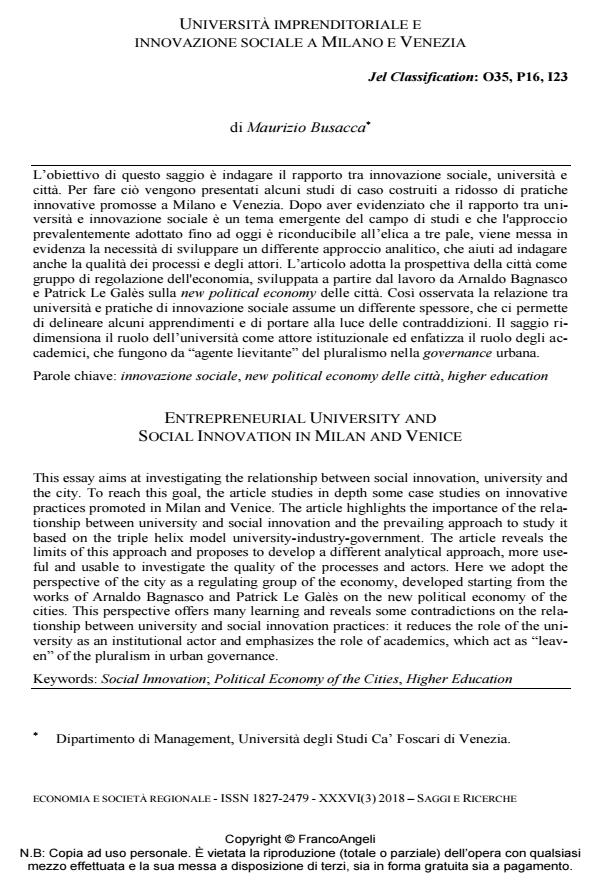Entrepreneurial university and social innovation in milan and venice
Journal title ECONOMIA E SOCIETÀ REGIONALE
Author/s Maurizio Busacca
Publishing Year 2018 Issue 2018/3
Language Italian Pages 23 P. 109-131 File size 493 KB
DOI 10.3280/ES2018-003010
DOI is like a bar code for intellectual property: to have more infomation
click here
Below, you can see the article first page
If you want to buy this article in PDF format, you can do it, following the instructions to buy download credits

FrancoAngeli is member of Publishers International Linking Association, Inc (PILA), a not-for-profit association which run the CrossRef service enabling links to and from online scholarly content.
This essay aims at investigating the relationship between social innovation, university and the city. To reach this goal, the article studies in depth some case studies on innovative practices promoted in Milan and Venice. The article highlights the importance of the relationship between university and social innovation and the prevailing approach to study it based on the triple helix model university-industry-government. The article reveals the limits of this approach and proposes to develop a different analytical approach, more useful and usable to investigate the quality of the processes and actors. Here we adopt the perspective of the city as a regulating group of the economy, developed starting from the works of Arnaldo Bagnasco and Patrick Le Galès on the new political economy of the cities. This perspective offers many learning and reveals some contradictions on the relationship between university and social innovation practices: it reduces the role of the university as an institutional actor and emphasizes the role of academics, which act as "leaven" of the pluralism in urban governance.
Keywords: Social Innovation; Political Economy of the Cities, Higher Education
Jel codes: O35, P16, I23
Maurizio Busacca, Università imprenditoriale e innovazione sociale a Milano e Venezia in "ECONOMIA E SOCIETÀ REGIONALE " 3/2018, pp 109-131, DOI: 10.3280/ES2018-003010